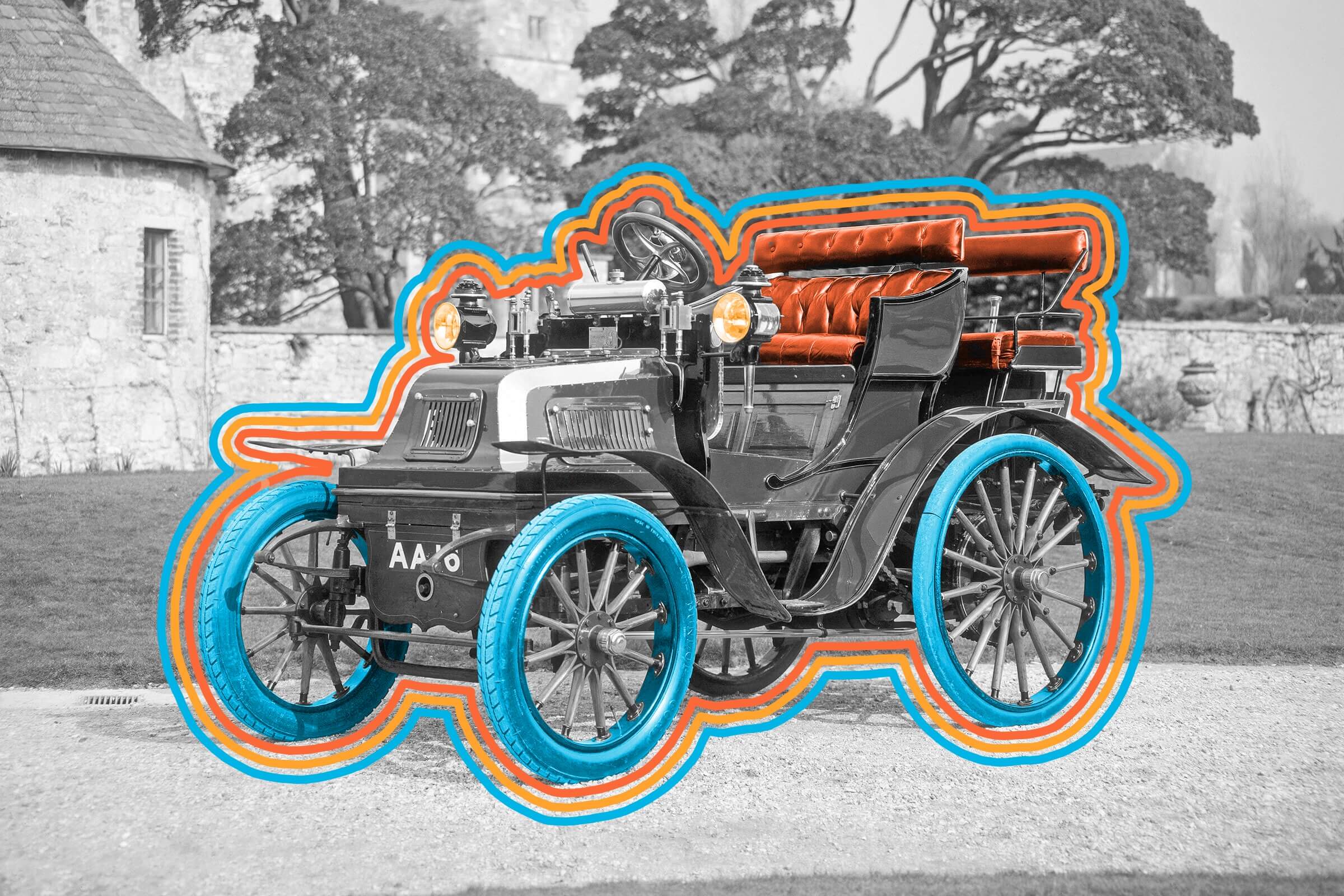
In 1900, about a third of vehicles were electric.
For centuries, getting around by horse and cart was the standard mode of transportation. By the 1800s, however, these hay-powered haulers were causing problems on busy city streets. As more people moved into cities, the number of horses dramatically increased, and with so many equines on the roads — New York City had around 150,000 horses in 1890 — came public health concerns over disease and mountains of manure. Horse travel, frankly put, was relatively dirty in comparison to making way by horseless carriage, aka the first electric vehicles. Marketed as clean, quiet, and easy to drive, early electric cars, which resembled traditional carriages, became so popular that by 1900 they accounted for around one-third of all automotive vehicles on roadways.
The earliest known full-sized electric car was designed by Robert Anderson, a Scottish inventor who built his version in the 1830s, though that car (and many of its successors) didn’t go very far; at the time, batteries were rudimentary and couldn’t be recharged. It would take about three decades for electric car batteries to improve, and starting in 1881, battery-operated buses began ferrying passengers in Paris, Berlin, London, and New York. A few years later, Iowa chemist William Morrison applied for a patent for his electric carriage, which could travel around 50 miles on one charge at a top speed of 20 miles per hour. By 1897, the top-selling car in the U.S. was powered by battery, though electric vehicles would hold the market for a relatively short time. By 1913, manufacturer Henry Ford had fine-tuned the mass production of gas-powered cars, dropping their price and helping to usher in a new era of private transportation.
While anyone of means could purchase an electric car at the turn of the 20th century, many models were particularly advertised to women as “ladies’ cars,” tied to a belief (however offensively) that they were easier to drive than steam- and gas-powered alternatives. Early advertisements appealed to social norms of the time, suggesting that women could attend to their errands and social events without dirtying their attire. Ads had an element of truth — electric cars didn’t produce fumes, and were quieter than gas-powered vehicles. That’s part of the reason even Henry Ford’s wife, Clara, preferred to drive one. (Clara set about her business in a Detroit Electric car, and purchased a new model every two years.) Despite the gendered advertising, electric vehicles did offer women the freedom to travel without anyone’s help, and many high-profile women carried keys to their own battery-powered vehicles, including five First Ladies: Helen Taft, Ellen Wilson, Edith Wilson, Florence Harding, and Grace Coolidge.

